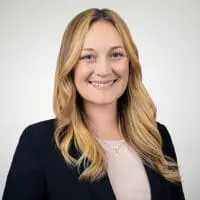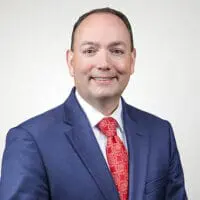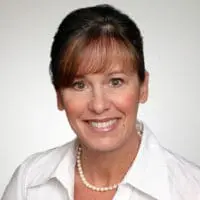Publication
California Revives COVID-19 Supplemental Paid Sick Leave
By Christy D. Joseph, Brian J. Mills and Ashley R. McLachlan
On February 9, 2022, Governor Newsom signed Senate Bill 114 resurrecting California COVID-19 Supplemental Paid Sick Leave for 2022 (SPSL 2022). As an employer you might think: “No problem, I already did this in 2021.” But not so fast. This is a new variant and is not a mirror image of the 2021 COVID-19 Supplemental Paid Sick Leave (SPSL 2021) enacted last March. This means that unfortunately employers cannot rely solely on their previous SPSL procedures. Highlighted below are some of SPSL 2022’s key provisions and distinctions. While SPSL 2022 also includes provisions for firefighters and in-home supportive care providers, the focus of this alert will be on the more general application.
Who and When?
SPSL 2022 goes into effect February 19, 2022. It covers employers with more than 25 employees. And like its predecessor, SPSL 2022 leave is retroactive to January 1, 2022 and is currently set to expire September 30, 2022. An employee who is unable to work or telework because of the certain enumerated reasons listed in the law are entitled to SPSL 2022.
Two “Buckets” of Leave
In total, SPSL 2022 provides for 80 hours of paid time off, but the leave entitlement is split into two buckets of 40 hours, which for the purposes of this alert, we will designate as Bucket A (Illness/Vaccine/Isolation Leave) and Bucket B (Test Leave).
In Bucket A (Illness/Vaccine/Isolation Leave), employees are entitled to up to 40 hours off paid time off if they make an oral or written request for any one of the following reasons:
- The employee is subject to or is caring for a family member who is subject to a government or local health department quarantine or isolation period related to COVID-19.
- The employee has been advised or is caring for a family member who has been advised by a health care provider to isolate or quarantine due to COVID-19.
- The employee is attending an appointment for themselves or a family member to receive a vaccine or a vaccine booster for protection against COVID-19.
- The employee is experiencing symptoms, or caring for a family member experiencing symptoms, related to a COVID-19 vaccine or vaccine booster that prevent the employee from being able to work or telework.1
- The employee is experiencing symptoms of COVID-19 and seeking a medical diagnosis.
- The employee is caring for a child whose school or place of care is closed or otherwise unavailable for reasons related to COVID-19 on the premises.
In Bucket B (Test Leave) employees are entitled to up to 40 hours of paid time off if they make an oral or written request for leave because the employee tests positive for COVID-19 or the employee is caring for a family member that tests positive for COVID-19. In this bucket, employers may require the employee to submit a diagnostic test on or after the fifth day after the positive test was taken and provide documentation of the results. The employer however will bear the cost of making such test available to the employee. The employer can also require copies of the test results before it approves payment.
Hopefully, the Labor Commissioner will provide practical guidance on how to appropriately track these leave distinctions.
Calculations, Paystubs and Notices
Employers are not required to pay more than $511 per day, or/and $5,110 in total. Calculating the pay rate for non-exempt employees differs from its 2021 counterpart. Under the new law, there are two pay-rate calculation options available, accounting for instances where employees are paid by piece rate, commission, or some other method. As for exempt employees, the SPSL 2022 pay rate is calculated in the same manner wages are calculated for other forms of paid leave time.
Last year, SPSL 2021 required a separate COVID-19 line-item on an employee’s paystub. This remains true for the new variant, however, unlike the former, where employers would put the amount of available leave on the employee’s paystub, SPSL 2022 now requires employers put the amount of used time on the paystub.
It is also unclear how or if the two “buckets” of leave will impact the used SPSL 2022 identified in a paystub. We hope the Labor Commissioner provides more guidance. Additionally, the Labor Commissioner has been tasked with issuing model notices for employers to post and/or distribute to assist employers with meeting their obligations to notify employees about available sick leave. This notice is separate and distinct from the notice of used SPSL 2022 on the paystub.
Set-offs and Retroactive Designation
Employers are also prohibited from requiring employees exhaust other paid leave benefits before taking SPSL 2022, such as vacation, PTO, California’s general paid sick leave law, under the Healthy Workplaces, Healthy Families Act of 2014 or SPSL 2021. Also, SPSL 2022 is in addition to the use of leave time to comply with the Cal/OSHA exclusion pay requirements.
The law does provide employers with the possibility to off-set SPSL 2022 for certain supplemental paid leave provided to employees on or after January 1, 2022. For example, paid leave provided in accordance with an existing local (city or county) ordinance that was for an amount equal to or greater than the amount required under SPSL 2022 and for a qualifying reason—may count toward the employee’s SPSL 2022 allotment.
Like before, employees may request, either orally or in writing that past absences taken on or after January 1, 2022, for a qualifying reason be retroactively designated as SPSL. Retroactive payments are to be paid on or before the payday for the next full pay period. Also, when an employee requests a prior paid absence be designated as SPSL 2022—the employer may need to credit SPSL 2022 to that absence. This means, for example, if an employee took generic paid sick leave in January 2022 to obtain the vaccine or booster—he or she could request their employer to designate that absence as SPSL 2022 and credit back the hours available for non-COVID-19 related paid sick leave. If the amount paid in this prior absence falls below the required pay rate for SPSL 2022, the employer may be required to compensate the employee for the balance.
Conclusion
There are several important distinctions between the 2021 and 2022 COVID-19 supplemental paid sick leave laws. We anticipate the Labor Commissioner to issue more detailed guidance and helpful FAQs on the new variant. But employers may want to work closely with their payroll providers, human resource department, and counsel to ensure they are correctly implementing SPSL 2022.
Footnotes
-
As it relates to vaccine or booster related leave, for each vaccination or vaccine booster, an employer may limit the total COVID-19 supplemental paid sick leave to three days or 24 hours unless the employee provides verification from a health care provider that the covered employee or their family member is continuing to experience symptoms related to a COVID-19 vaccine or vaccine booster.
About Snell & Wilmer
Founded in 1938, Snell & Wilmer is a full-service business law firm with more than 500 attorneys practicing in 17 locations throughout the United States and in Mexico, including Phoenix and Tucson, Arizona; Los Angeles, Orange County, Palo Alto and San Diego, California; Denver, Colorado; Washington, D.C.; Boise, Idaho; Las Vegas and Reno-Tahoe, Nevada; Albuquerque, New Mexico; Portland, Oregon; Dallas, Texas; Salt Lake City, Utah; Seattle, Washington; and Los Cabos, Mexico. The firm represents clients ranging from large, publicly traded corporations to small businesses, individuals and entrepreneurs. For more information, visit swlaw.com.



